Plant description
Just when you thought you knew all of the most common types of Philodendron by heart… here comes a stunner, plant friends! The velvety, iridescent leaves of the Philodendron micans make it a glamorous stand out to any vine collection. Also known as Velvet Leaf Philodendron, this plant is loved for its versatility and the easy-care routine that goes along with it.
This relatively common houseplant is native to Central America and the Caribbean, where it grows in tropical rainforests. Philodendron is a voracious tree-climber, and its name means just that (philo– is Greek for “affection for” and –dendron means “tree”).
Micans translates from Latin as “shiny,” referring to the subtle copper shine the young leaves of this Philodendron give off. The leaves of Philodendron micans mature into deep-green, spade-shaped foliage that can grow up to a foot in diameter. Given the opportunity, this plant will spread and climb energetically – like Ivy. Most indoor Philodendron micans will maintain a more modest leaf size if not allowed to climb.
Philodendron micans add glamorous vibrance to any room with foliage hues of deep green, purple, and copper that shift with light and time. Learn how to keep the Philodendron micans alive for many years with a little care on a regular schedule.
Plant facts
| common names | Philodendron Micans, Philodendron Hederaceum, Velvet Leaf Philodendron |
| botanical name | Philodendron hederaceum |
| no. of species | More than 400 |
| family | Araceae |
| biological life cycle | Perennial |
| foliage | Vines |
| mature size | Up to 8 inches tall, vines can grow to several feet long |
| time to maturity | 2-3 growing seasons |
| origins | Central America, Caribbean |
| light conditions | Lots of indirect light, shade tolerant |
| soil type | Well drained, moisture retaining |
| water ph | Acidic (5.5-6) |
| usda zone | 10-11 |
| toxicity | Toxic to pets and humans |
Popular Varieties/Related Plants:
Popular varieties of Philodendrons hederaceum include Micans/Velvet Leaf, Green, Brazil, Lemon Lime, White Stripe, and Rio
- Velvet Leaf Philodendron (Philodendron ‘Micans / Velvet Leaf’)
- Imperial Green Philodendron (Philodendron erubescens)
- Philodendron Brasil (Philodendron hederaceum ‘Brasil’)
- Lemon Lime Philodendron (Philodendron ‘Lemon Lime’)
- White Stripe Philodendron (Philodendron ‘Birkin’)
- Split Leaf Philodendron (Philodendron bipinnatifidum)
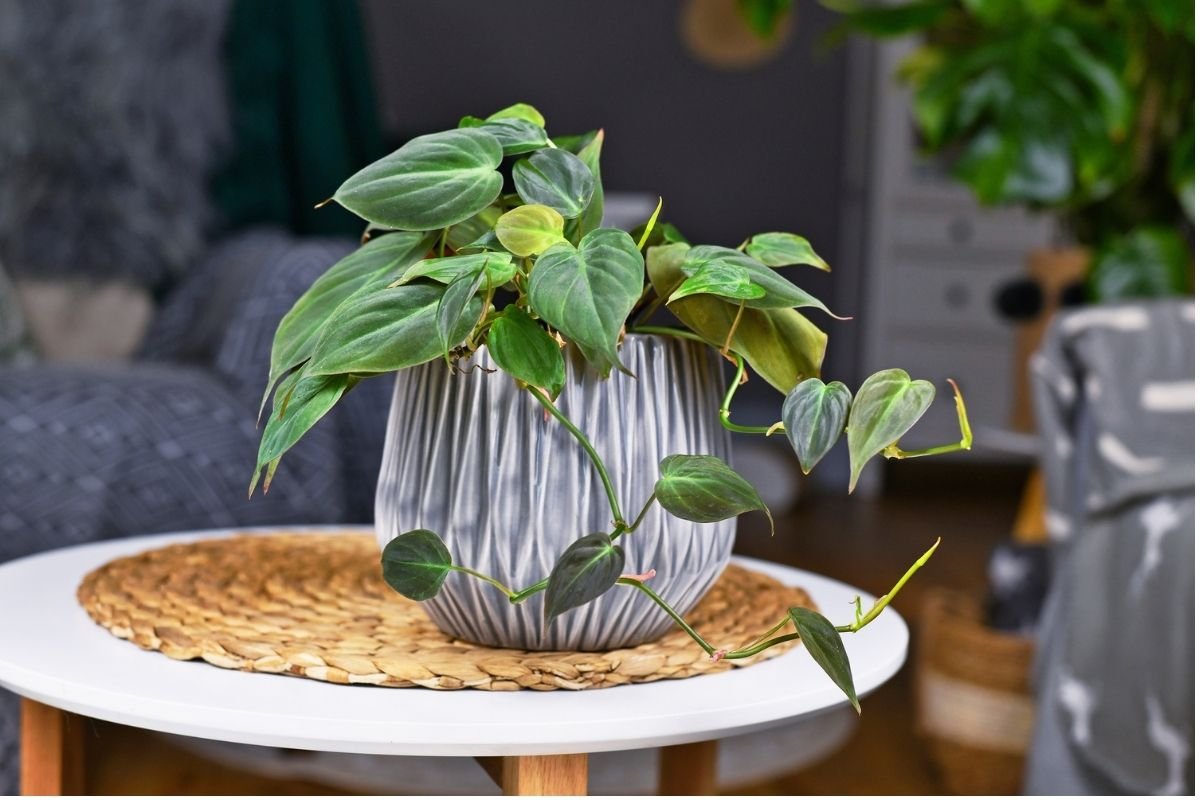
Maintenance
The Velvet Leaf Philodendron is easy to grow indoors. With a little regular care, it will produce a thick mane of leafy vines. As a tropical forest plant, Philodendron micans can tolerate some shade, but loves lots of indirect light. This Philodendron has a shallow root ball and many aerial roots along its vines, so it doesn’t need a ton of water to keep it hydrated. A little passive care goes a long way with a Philodendron micans.
Light 🔆
Best light: bright indirect light
In nature, Philodendron micans grows in the understory of the rainforest in the shade of the canopy. Still, a lot of light makes it to the forest floor, leaving this plant one that can tolerate shade, but one that prefers a lot of bright indirect light. Too much light indoors can be bad for this plant, however, and can result in droopy leaves, browned leaves, or dehydration.
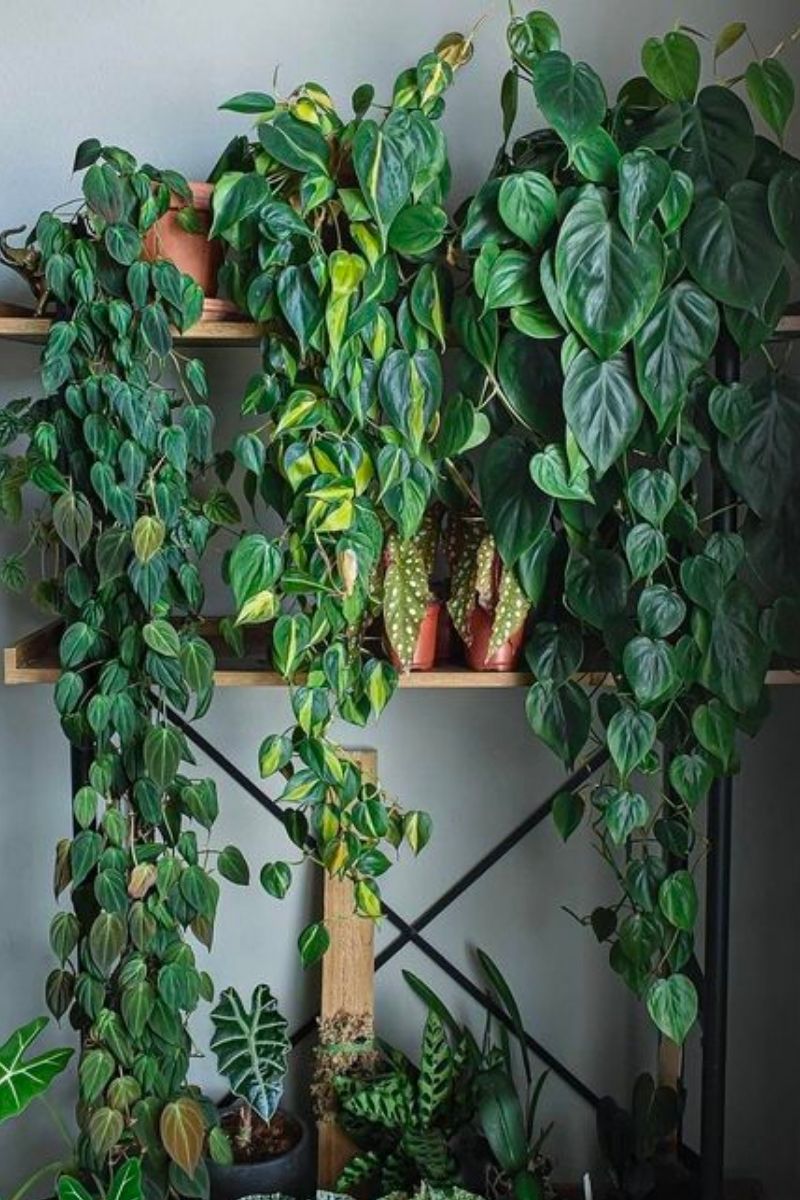
Water 💧
Water needs: once or twice a week
Growing at the base of trees and up along the trunks, the Velvet Leaf Philodendron is used to getting much of its water from moisture in the air. Since it has short, shallow roots, it doesn’t need as moist of soil as other plants might. Water your Philodendron micans once or twice a week, or when the top two inches of the soil is dry. Don’t allow the roots to totally dry out!
You can check the soil moisture levels easily with a moisture meter like this one:
Humidity 🌫️
Since this plant is from the humid tropics, it definitely appreciates moisture in the air. However, Philodendron micans is just fine in a normal humidity level as well, another reason it’s an easy plant to care for. Philodendron micans will be happy in a humid area of the house, like a bathroom or kitchen, where it might get some extra moisture.
This water baby would also appreciate a spray from a spritzer from time to time, or a prized spot close to your plant humidifier.
Temperature 🌡️
Although Philodendron Micans originate in the tropics, they are acclimated to the cooler temperatures of the understory, out of direct sunlight, and therefore prefer moderately warm temperatures between 65 and 75 degrees F.
Despite their similarity to the nearly indestructible English Ivy known in the north, philodendrons are an herbaceous perennial whose vines will freeze if exposed to too low of temperatures; true ivy has woody vines that survive harsh winter temperatures and just about any attempt to kill it! Your Philodendron Micans will be most comfortable at a normal indoor temperature.
Fertilizer 💩
The rainforest floor-dwelling Philodendron Micans is accustomed to nutrient-rich soil. The easiest way to be sure your plant is getting enough nutrients is to add a little plant fertilizer to the water that you give the plant. Either dissolve a little dry fertilizer in water or add a few drops of liquid fertilizer to the water container before watering.
A little fertilizer over a while will keep the plant well-fed. Check the soil’s profile every couple of months to be sure you aren’t overdoing it.
Soil
Soil Type: well drained, moisture retaining
pH level: 5.5-6
Philodendrons are used to a moist soil type, but since it stays in the upper few inches of the soil, the roots are used to well-drained soil as well. For a Philodendron micans, mix some coarse material like sand and pine or orchid bark with regular potting soil to help drainage.
THE CHONK. Chunky Soil-Less Potting Medium
This premium plant mix, carefully hand-mixed with wood bark, pumice, and Sphagnum peat moss promotes healthy root growth and prevents root rot. Perfect for all indoor plants, this small batch mix is designed to increase air access, avoid common soil issues, and can be used in soil or semi-hydro setups.
A Philodendron micans will also do well when planted in Leca, which will keep its roots exposed and dry.
Repotting
This plant is a homebody that likes to stay in familiar soil when repotted. To transfer a Philodendron micans plant to a bigger pot, don’t shake soil free from the roots. These plants have fibrous roots that prefer not to be disturbed if they don’t need to be.
Simply scoop some soil in the new pot, then place the micans with root ball and soil intact right in. Fill in the sides and some on top as well so the roots are nestled in the new pot. Since this plant likes well drained soil, be sure the new pot has drainage holes.
You will need to remove soil from the micans’ root ball if you’re changing medium, however, like from soil to Leca.
To transfer a Philodendron micans to Leca, you should remove all old soil from the roots. Take the roots and soil out and allow it to dry out over a day or two, so the dry soil will shake easily from the plant’s roots. Clean the roots completely of soil before putting them into Leca. More on Leca later!
Propagation 🌱
Propagating Philodendron micans is super easy! These plants grow little root nodes at the surface level of the soil, which can be clipped with a stem cutting. Then you can set them in water or Leca as you would another propagation, before putting the new plant in a growing medium. Taking a clipping from along the vine is another easy way to start a new micans plant.
Pruning 🌿
Your Velvet Leaf Philodendron won’t be harmed if you cut its vines back to shape the plant, or if you take clippings for propagation. If you’d like to see how big your Philodendron will grow and have space for it, simply prune leaves and vines as they grow old and wither.
Pests and diseases 🐛
Philodendron Micans are susceptible to the usual array of houseplant pests: spider mites, fungus gnats, and aphids. These common pests usually show up when a plant is overwatered or soil is saturated with standing water. Philodendrons, in particular, can be affected by overwatering since they have shallow roots that can be stressed easily or develop root rot when there’s too much water. If overwatering isn’t your issue, treat your plant with neem oil to take care of minor to moderate infestations.
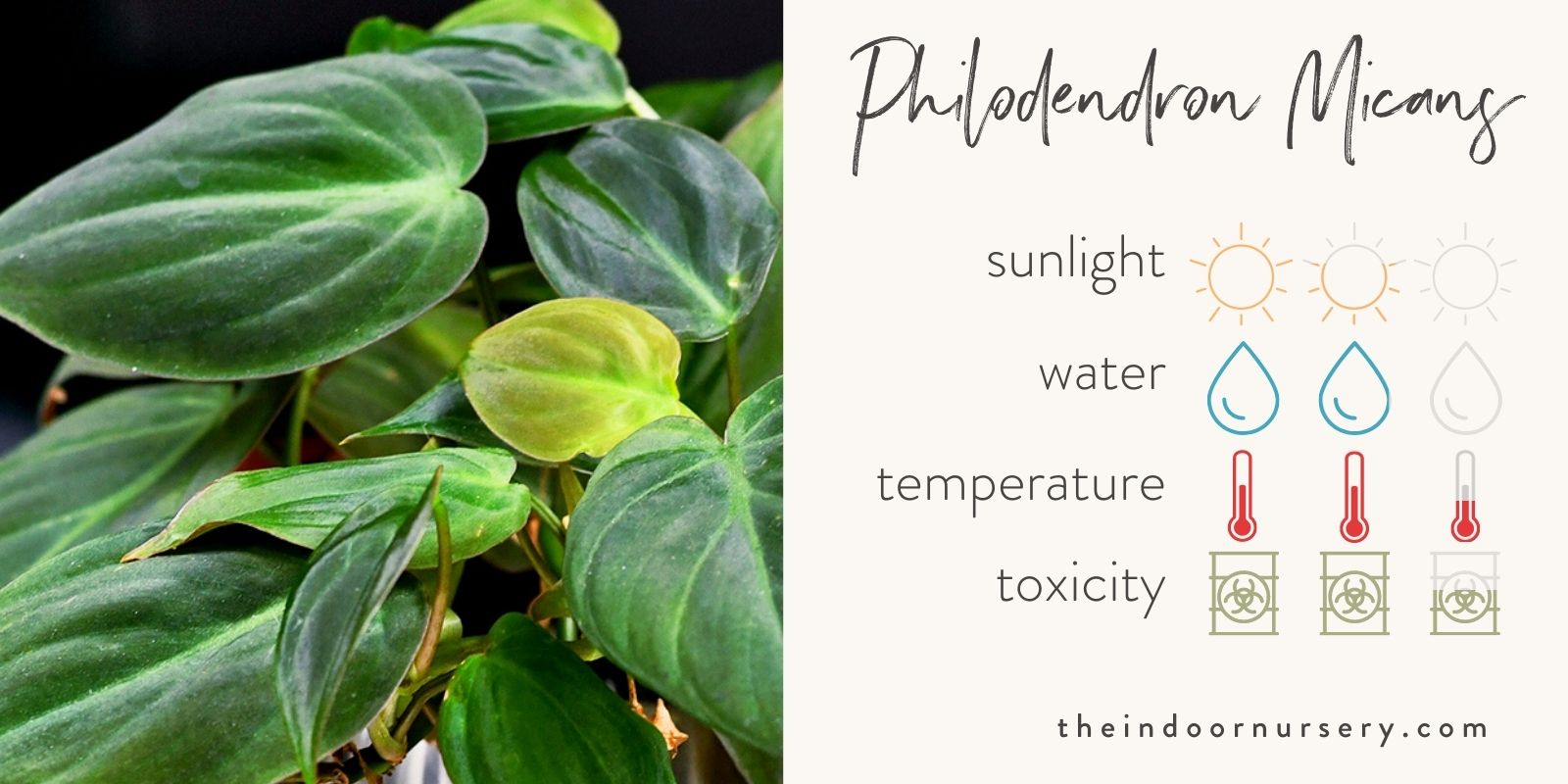
Philodendron micans plant care tips
- Use a moss pole to grow vertically. In their natural habitat, Philodendrons attach themselves to the bark and moss along the trunks of trees. Climbing plants like these have aerial roots that hold onto the textured surface to grow vertically. When kept as houseplants, many Philodendrons are grown as a potted bush or in a hanging basket, but if you provide a sturdy surface for the vines to hold on to, the vines will climb and the plant will take on a much different appearance. A moss pole is a great way to allow your plant to grow upwards rather than down. Buy one in a garden store or learn how to make a moss pole yourself with a few cheap materials!
- Plant your Philodendron in Leca. In nature, Philodendron Micans get a fair amount of water from organic sources on the trees they climb, most notably moss, water vapor in the air, and condensation on the tree bark. This makes Philodendron Micans a good candidate for Leca – porous clay pebbles that can be used as a moisture-retaining inorganic planting medium. Nutrients are supplied to plants in Leca by adding a liquid fertilizer to the water, just the way Philodendrons in soil prefer to be cared for.
Common Problems / FAQs:
Why are the leaves on my Philodendron Micans curling?
When you notice your Philodendron Micans’ leaves are curling inwards, it means the plant is dehydrated. If you catch it early enough, watering it lightly a little more frequently than you had been, say, two times a week instead of once, you may be able to nurse it back to health. This plant may also become dehydrated if it’s getting too much direct sun.
Why don’t my Philodendron Micans have many leaves?
If a Philodendron Micans isn’t getting enough light, it will grow long vines to try to reach for more light. It also will conserve energy by producing fewer leaves on the extra-long vines. The more bright indirect light the plant gets, the more leaves it will produce. Philodendron micans generally tolerate low light conditions, but if it seems to be struggling, consider getting an indoor lighting source for the health of the plant.
Shop our recommendations
- The Best Hydroponic Tower For Indoor Gardening
- 10 Best Worm Composter Bins For Easy Homemade Compost
- The Best pH Meter For Soil
- The 6 Best Dehumidifiers For Grow Tents
- The Best Complete Indoor Hydroponic Grow System
- 5 Best Grow Light Strips For Indoor Plants
- TESTED: Aerogarden vs Click and Grow Smart Garden
- Our *hands on* MARS HYDRO TSW 2000 review (with photos)
- 7 Best Hygrometers For Indoor Plants
- The Best Coco Coir For Your Plant’s Healthiest Root System Ever

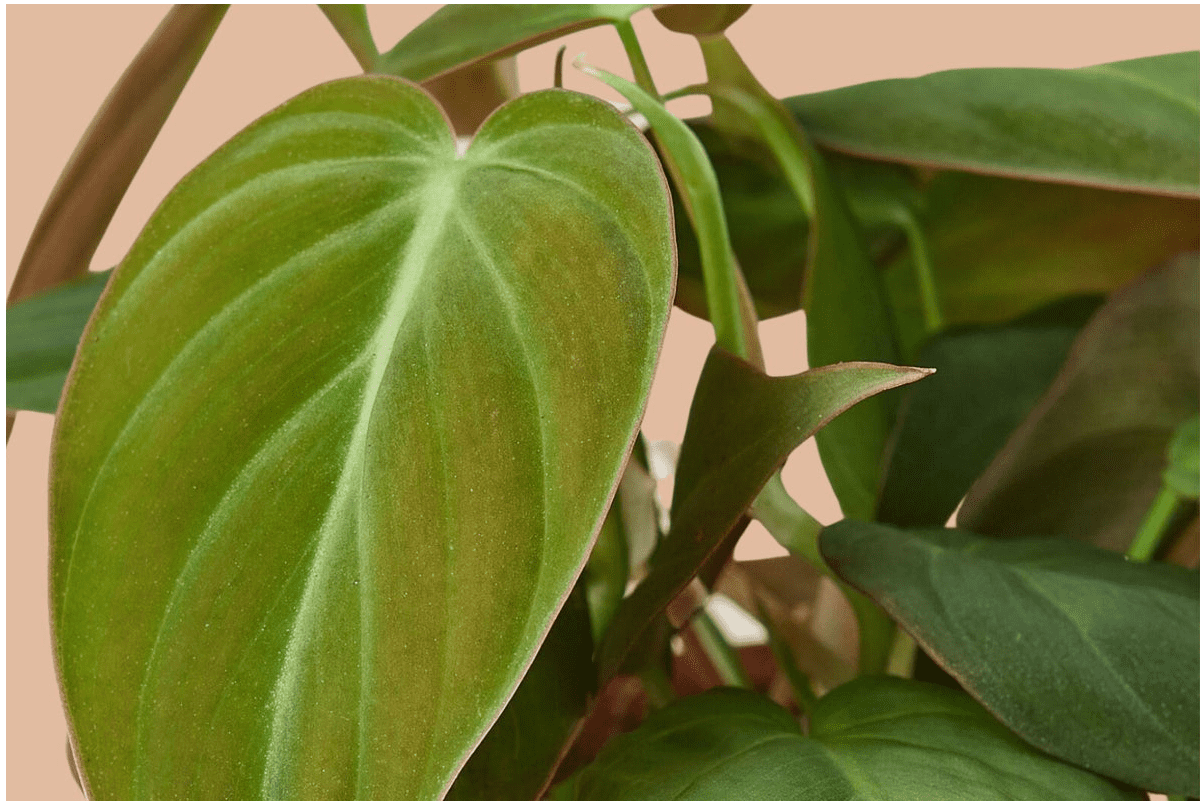
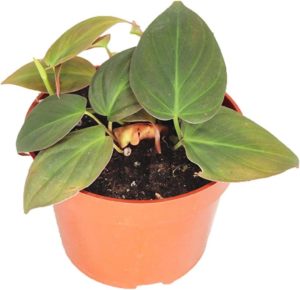





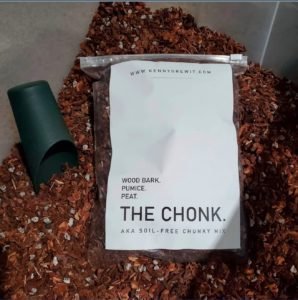
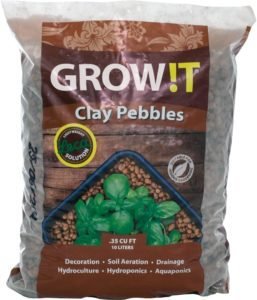

Hey, Marcia! Thanks for reading :) gosh, that's a great idea to double up on your watering globe and spike.…